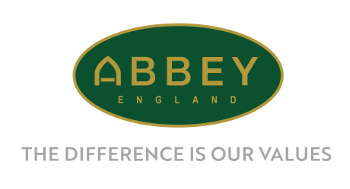The Abbey Information Exchange: Why we should all be adopting Agile Project Management
Friday, 21 February 2020
Why we should all be adopting Agile Project Management.
During this read, you will come across terms like SCRUM and SPRINT so let’s make one thing apparent from the start - we’re not talking about the Six Nations Rugby. In fact, these terms are also used in Agile Project Management to describe teams and processes and for the past 10 months, Abbey’s Commercial Director Peter Phillips and his team have been applying this technique to our business. Having been introduced to this way of managing projects through Made Smarter’s Digitalisation Leadership Programme and seeing it operate successfully, we felt it would be a good idea to write about it on the Exchange.
What is Agile Project Management?
Generally speaking, APM is an incremental method of management. It encourages teams to scale down their projects and split them into shorter, more achievable and manageable projects called Sprints. By doing just this, you encourage your team to really focus on the task in hand and deliver rapid results. Each sprint builds upon the previous one until you reach your end goal. There are two methodologies used in AMP, Kanban and Scrum, and as a team we employed the latter method.
What’s the process?
- Each Sprint starts with a Sprint Planning Meeting – facilitated by the Scrum Master and attended by the Product Owner and Development Team. Collectively they prioritise items from the Product Backlog that the Development Team can deliver in a single Sprint (typically a sprint would last 1 – 2 weeks). These items are now referred to as the Sprint Backlog.
- The Development Team works on achieving the tasks from the Sprint Backlog.
- Each day during the Sprint there will be a Daily Scrum - a short meeting attended by all three members to discuss progress and to raise any issues which might have arisen.
- At the end of the Sprint, a review on what went well and what improvements could be made to ensure the next Sprint is more effective and efficient.
- Any items which have not been completed by the end of the Sprint, must be returned to the Product Backlog.
Top Tip
This method recommends having an ‘agile board’. Agile boards are a great way of visually tracking your progress. Write down all your tasks required for Sprint 1 onto post-it notes and stick them to a board in the ‘to-do’ column. Then move your post-it notes across the columns as and when appropriate.Why do this?
Speaking from experience, Scrum delivers several benefits. It makes implementing projects more manageable and increases control, reduces risk of project failure while results are delivered frequently and benefits are realised early.Lancaster University’s Made Smarter Programme Manager, Helen Wilkinson, said ‘We introduced Sprints onto the Made Smarter Programme as a tool to enable businesses to tackle complex projects and break them down into manageable chunks. This is particularly valuable in the current environment, where change is rapid and the problem to be solved can be complex. At the start the solution will be unknown, but the process allows teams to work together in a flexible and fast way to complete the project and find optimal solutions.’
Following the basic principles of APM, we can apply them to any size of business – even sole traders. All you need is a whiteboard. We hope by applying APM to your own business, you too can manage your projects with greater ease, clarity and efficiency.
To find out more, follow Made Smarter on LinkedIn https://www.linkedin.com/company/madesmarteruk/



 Deutsch (Deutschland)
Deutsch (Deutschland) Español (España)
Español (España) Français (France)
Français (France) Italiano (Italia)
Italiano (Italia)
